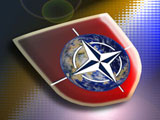Reinforcing NATO’s Identity
By Mikko Patokallio for ISN
In November 2010, NATO will issue a new Strategic Concept intended to consolidate and focus the alliance’s security agenda. The new concept will mix the old with new, drawing NATO back to its identity as a military alliance, while identifying the new threats it foresees in the coming decades.
NATO is and always has been a military alliance, centered on collective defense. However, this core dimension has been diluted by an expansive definition of ‘security’ to include a host of non-military threats. This expansion has not worked.
The alliance simply does not have the resources to cut across the security spectrum and the diversion of resources has angered some members. Moreover, NATO is not good in responding to these new threats. Reinforcement of its identity as a military alliance will feature prominently in the Strategic Concept, and if it fails to provide meaningful collective defense, membership in the alliance will no longer be worth it for many.
However, most future challenges to Euro-Atlantic security will not originate from Europe. NATO’s role in Europe and relations with Russia will remain undeniably important, but the Organization's geographic focus will increasingly shift south. The focus of NATO’s future activity will be in Africa and the Middle East. NATO’s current operations in Afghanistan (ISAF) and Somalia (Ocean Shield) are harbingers of things to come. This reflects the type of threats that NATO foresees: out-of-area, complex crises that necessitate a comprehensive approach.
Afghanistan has also shown that NATO cannot deal with such complex crises alone. As such, NATO will need to work together with those that can effectively provide the civilian aspects that it currently lacks. This means creating and expanding partnerships with states and organizations that can provide critical resources which the alliance cannot replicate. NATO’s 2008 framework for cooperation with the UN is a sign of things to come.
Shortsightedness plagued NATO’s earlier strategic thinking, leading to ad hoc solutions and all the problems associated with poor planning. The 1991 Concept failed to foresee a world without the Soviet Union; the 1999 Concept ignored out-of-area threats. The new Strategic Concept needs to be bold and transcend current issues to identify what the Afghanistan of 2020 will be. Even that alone will not be enough; more importantly, it should determine how NATO can deal with the next Afghanistan more effectively.

